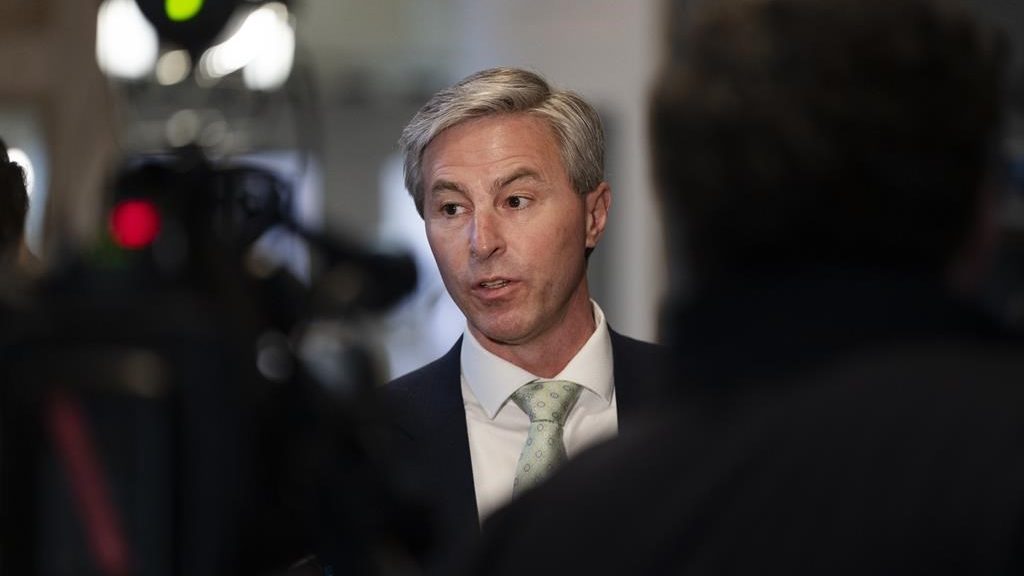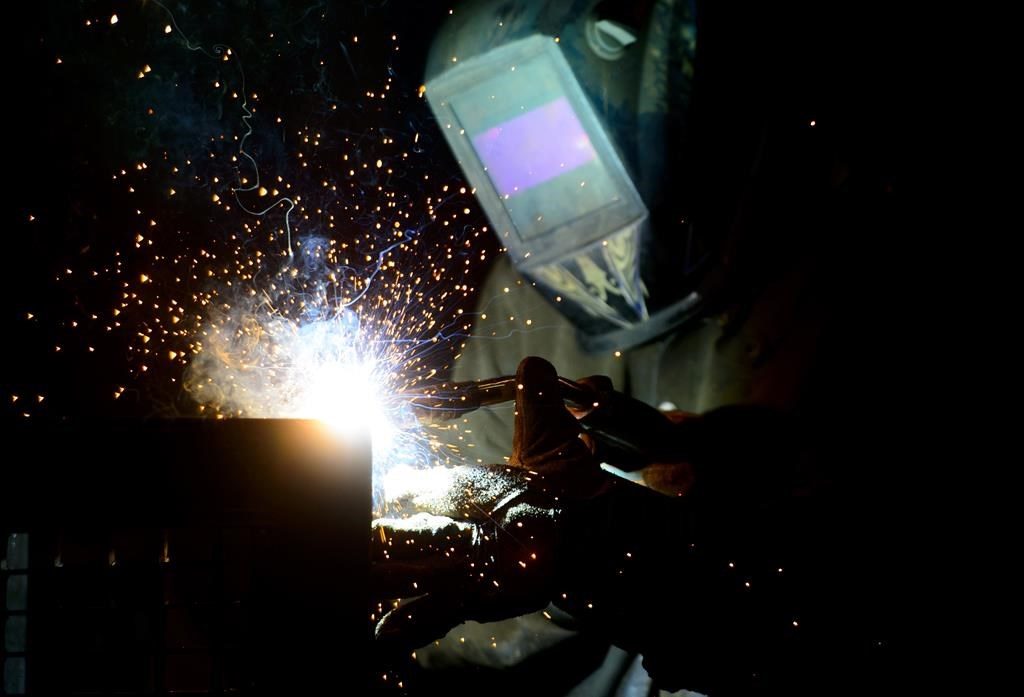Alberta runs in red; borrows billions to build roads, schools, hospitals
Posted Mar 7, 2013 05:22:22 PM.
This article is more than 5 years old.
EDMONTON – The Alberta government — squeezed by falling oil revenues and a growing population — has delivered a budget that holds the line on day-to-day spending but borrows billions to build roads, hospitals and schools.
There are no new or increased taxes.
The result is $6.3 billion in red ink.
“We are having a tough time here,” Finance Minister Doug Horner said Thursday before tabling the 2013-14 document in the legislature.
“We’re going to have five million people in this province within 17 years. Where are their kids going to go to school? Where are they going to have hospitals to go to? How are they going to get to work if the road isn’t there?
“We have to be able to build for the future — and that’s what this (budget) is about.”
But critics said the budget is a colossal financial failure that needlessly returns the province to crushing multibillion-dollar debtloads less than a decade after it climbed into the black.
“It’s a historically sad day,” said Opposition Wildrose Leader Danielle Smith.
“After Alberta had been proud of the legacy of becoming debt free under (former premier Ralph) Klein in 2004, this premier is plunging this province back into debt. Significant debt.
“It took a generation to pay off the (previous $23-billion) debt. It’s going to take a generation to pay off the Redford debt as well.”
Brian Mason said the budget breaks Premier Alison Redford’s election promises to look after those in need by cutting aid to seniors.
“What we’re seeing is a shrinking budget for a growing province, and that’s going to create all sorts of problems,” said Mason.
Even though the government is not increasing its overall spending on operations, it anticipates a $2-billion deficit on revenues of $38.6 billion. The gap will be covered by the government’s Sustainability Fund, now renamed the Contingency Account. That fund had $17-billion at its peak four years ago but will be down to $691 million by this time next year.
Horner said the shortfall can’t be helped, but he isn’t happy about it.
“It’s been very rare for Alberta to have an operating deficit. That’s a big deal to me. I don’t want to see operating deficits in the future.”
He reiterated that falling revenues for Alberta’s oil are at the root of the province’s financial difficulties. The price that Alberta gets for its oilsands bitumen has been well below the North American benchmark for oil, West Texas Intermediate. That has knocked $6 billion off what the province had hoped to take in.
Alberta’s overall economy remains strong and unemployment is low. The population of 3.7 million is growing by 100,000 a year.
To combat the squeeze, Premier Alison Redford announced last year that her government would use its strong credit rating and low interest rates to borrow for infrastructure. The province has already borrowed $1.1 billion to twin the overcrowded and dangerous Highway 63 to the oilsands hub of Fort McMurray.
Thursday’s budget announced $4.3 billion in infrastructure borrowing, which includes the money for Highway 63. When the loan is combined with the $2-billion operating deficit, it leaves a $6.3 billion hole in the government’s pocketbook.
Horner stressed the infrastructure borrowing should not be seen as part of the deficit because the government considers roads, schools and hospitals to be assets.
The budget promises $15 billion in spending over the next three years to build 50 new schools and upgrade another 70. There is to be $650 million worth of improvements to post-secondary institutions, and $2.1 billion for hospitals, family-care clinics and long-term care facilities.
There is also a provision for $2.5 billion over three years for towns and cities.
Horner reiterated that there is no extra money for salary increases for doctors, nurses or teachers.
“We have the highest-paid teachers in the country. We have the highest-paid doctors in the country (and only) Saskatchewan might be a little bit higher than us on the nursing side.”
Even though spending is effectively frozen, the move amounts to a cut when inflation and a four per cent growth in population are factored in.
The government resisted calls from opponents and academics to increase taxes. Redford had said in recent weeks that Alberta’s tax system has made the province profitable in the first place.
The government had already promised to cut 10 per cent of its management jobs over the next three years. Horner said he doesn’t foresee additional layoffs, but couldn’t rule them out.
Spending on health is to increase by $500 million, or three per cent, to $17.1 billion.
Of that amount, Alberta Health Services, which is responsible for delivering health care, is to get $10.5 billion for front-line services — a three per cent increase over last year.
In education, $6.1 billion is to be spent on grade-school funding to keep up with enrolment growth.
But post-secondary institutions are getting hit with a seven per cent cut to their $2 billion in operating grants. They’re also being directed to find savings in-house and to spare students from having to make up any shortfalls.
There are also cuts to a property tax assistance program for seniors, and some programs and exemptions for seniors have been axed.
“It’s an intellectually and morally bankrupt budget,” said Liberal Leader Raj Sherman.
“This is a budget that hurts people.”
The budget represents a shift in how Alberta saves and spends. Redford had said she wanted a document that plans for dedicated savings to wean the government off the peaks and valleys of oil and gas prices.
To that end, Horner also introduced legislation that mandates a percentage of non-renewable resource revenue go to savings. It also dictates that debt servicing can’t be more than three per cent of operating spending.
Opponents said the net result is jiggery-pokery with the government sneaking day-to-day money into the capital side to hide the true size of the deficit.
They suggested the true operational deficit could be $5 billion or higher.
“If there’s one thing you have to take away from this budget it’s that you can’t trust (the Tories),” said Derek Fildebrandt of the Canadian Taxpayers Federation. “I’ve never, ever seen anything that comes anywhere close to this when it comes to cooking the books.
“They’ve chopped the budget into three different pieces. It’s absolutely meaningless. The government’s deficit numbers don’t mean a thing. Tear it up.”
On the revenue side, personal and corporate taxes are expected to bring in $19 billion, representing about half of all revenue.
Personal income tax is pegged to rise almost four per cent to $10 billion because of the growing population, while corporate taxes are expected to fall three per cent to $4.8 billion.
Non-renewable resource revenue, including money from the oilsands, is forecast to bring in $7.3 billion. The government expects oilsands bitumen will fetch on average US$68.21 a barrel this budget year — about three-quarters of the predicted benchmark price for West Texas Intermediate.
Horner says a pipeline bottleneck to the United States along with an oil glut from finds in North Dakota are to blame for the price differential.
The 2013-14 budget is more bad news from the province. In the current budget year, which ends March 31, the province had expected to run an $886-million deficit, but that has ballooned to an estimated $4 billion.
Horner found one bright note as he rose in the legislature to deliver the fiscal news. Before he started his budget speech, he wished Redford a happy 48th birthday.










